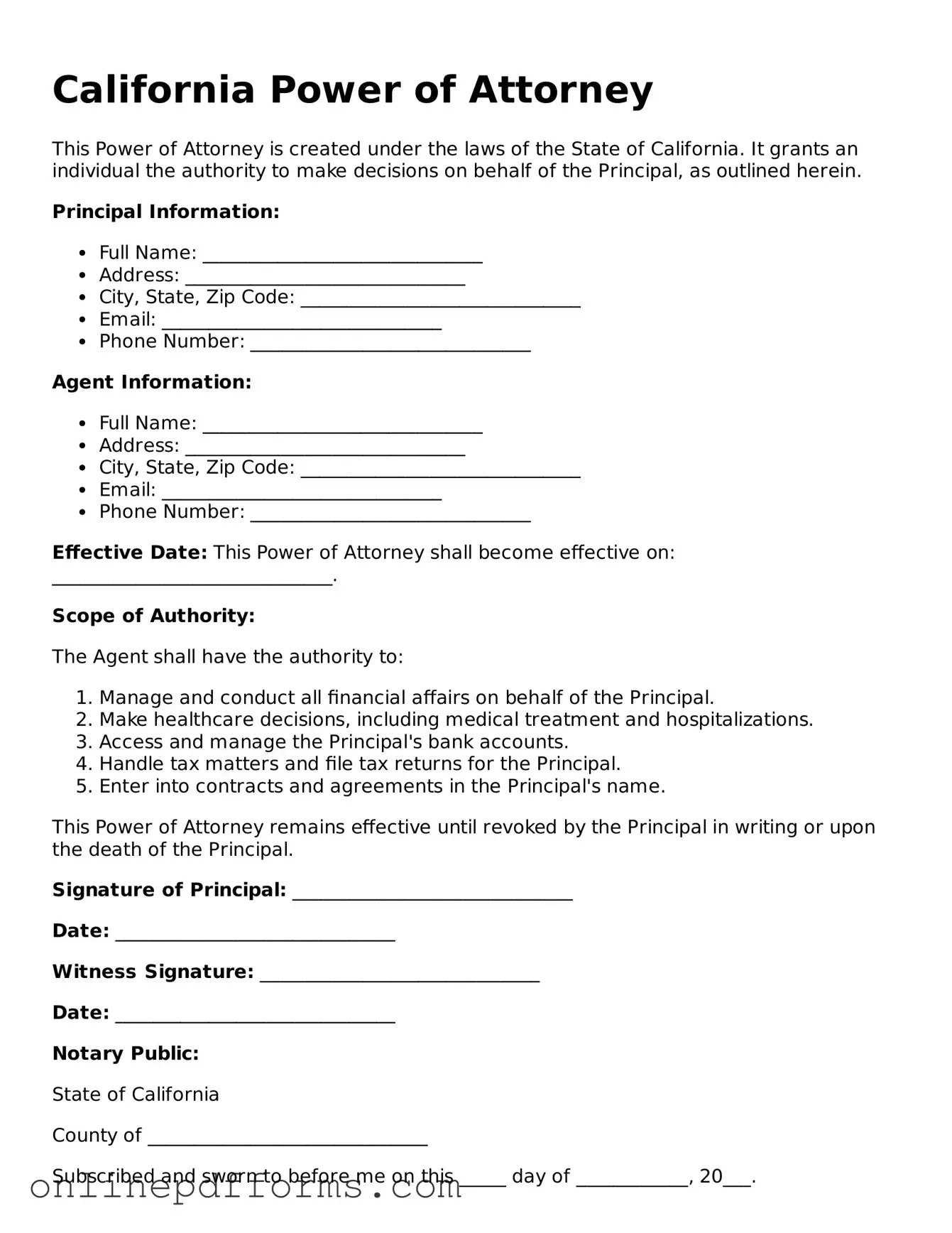The California Power of Attorney (POA) form is similar to a Living Will, which outlines a person's preferences regarding medical treatment in the event they become unable to communicate those wishes. Both documents serve to protect an individual's rights and preferences when they are incapacitated. While the POA designates someone to make decisions on behalf of another, a Living Will specifically addresses healthcare decisions, ensuring that medical providers respect the individual's desires about life-sustaining treatment and other medical interventions.
Another document akin to the Power of Attorney is the Advance Healthcare Directive. This combines the elements of a Living Will and a Medical POA, allowing individuals to specify their healthcare preferences and appoint an agent to make medical decisions on their behalf. By doing so, it provides a comprehensive approach to healthcare planning, ensuring that both specific wishes and the appointment of a trusted individual are addressed in one document.
The Durable Power of Attorney is closely related as well. This type of POA remains effective even if the principal becomes incapacitated. In contrast to a standard POA, which may become void under certain circumstances, the Durable Power of Attorney ensures continuity in decision-making, allowing the appointed agent to manage financial and legal matters without interruption, thus providing peace of mind during challenging times.
A Healthcare Proxy also shares similarities with the California Power of Attorney. This document allows an individual to designate someone to make healthcare decisions on their behalf if they are unable to do so. The key difference lies in its focus solely on healthcare matters, while a general POA can encompass a broader range of financial and legal decisions. Both documents emphasize the importance of having a trusted person in place to advocate for one’s wishes in times of need.
The Revocable Living Trust is another related document. Although it primarily deals with the management and distribution of assets, it can also include provisions for appointing a trustee to handle affairs if the individual becomes incapacitated. Like a Power of Attorney, it ensures that someone is available to manage financial matters, but it does so within the context of estate planning, providing a comprehensive approach to both asset management and decision-making.
Similarly, a Guardianship Agreement can be compared to the Power of Attorney, particularly in the context of appointing someone to make decisions for another person. However, a Guardianship Agreement is typically established through the court system and is often used for minors or individuals deemed unable to care for themselves. While both documents aim to protect vulnerable individuals, the process and legal implications differ significantly, with guardianship involving a more formal judicial oversight.
Lastly, a Conservatorship is akin to a Power of Attorney but is usually established for individuals who are unable to manage their own affairs due to incapacity. A conservatorship is often court-appointed, giving the conservator legal authority to make decisions regarding personal and financial matters. While a Power of Attorney allows individuals to choose their representative voluntarily, a conservatorship involves a legal process that may be necessary when no suitable POA exists or when there is a dispute about the individual’s capacity.
